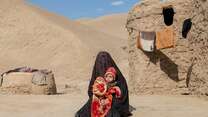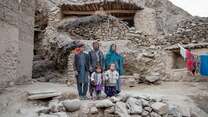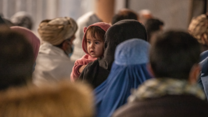Transitions are not new to Afghanistan, but 2014 is a crucial year for the country, which could move toward a more peaceful, self-sufficient future—or experience enormous setbacks.
In Afghanistan, 2014 is a year of major transitions. Following the presidential elections, a new government will chart the course for the Afghan people. For the first time in 12 years, Afghanistan’s national security forces will take full responsibility for providing protection and security for the country. Afghanistan’s economic growth is declining, as international funding, a substantial source of the country’s income, is dropping sharply. In this time of uncertainty, violent conflict is rising.
This pivotal year is also a transition for the international community in Afghanistan. International forces, which once numbered more than 132,000, plan to complete their withdrawal by December 2014. Donors are wavering about their long-term commitments; aid funding has already been cut, and deeply. Insecurity makes aid work difficult and dangerous. Poor coordination and a focus on security objectives have hindered past approaches to aid. International donors and the Afghan people are frustrated that the heavy investment in the country has not yielded greater improvements in the quality of life.
Despite challenges, there have been positive changes in Afghanistan. The International Rescue Committee (IRC) and other organizations have worked alongside Afghans throughout 30 years of conflicts and disasters. The IRC works in partnership with Afghans in over 4,000 villages across nine provinces on programs that meet urgent and longer-term needs. Over the decades, we have come to know the Afghan people as resilient, capable, and deeply committed to the future of their country.
To better gauge Afghans’ hopes and fears regarding the future of the country, IRC researchers consulted 136 of the 650 Afghans who serve on our staff across the country. This report highlights their observations and outlines recommendations for international engagement in Afghanistan beyond 2014.
IRC staff members told us that in their communities, substantial gains have been made using a community-based, grassroots approach to aid. With this approach, humanitarian and development agencies and organizations work with Afghan communities, building trust, identifying needs, and, where appropriate and feasible, strengthening the ability of local people and the government of Afghanistan1 to meet their goals. Working with local community leaders in districts and villages across the country, international organizations are able to deliver emergency assistance, provide education and health services, improve infrastructure, and help the Afghan people create livelihood and income generating opportunities.
IRC staff members also talked about the serious security risks facing Afghans and humanitarian workers in the country. They said that the only way to reach communities in need is to be impartial and independent, building trust with Afghan people. When communities accept aid agencies, it is easier to negotiate access and mitigate risks to aid workers. In fact, as international security forces draw down, access for aid agencies in some areas of Afghanistan may very well increase. The military withdrawal, coupled with local acceptance efforts, may create an opening for a new kind of long-term engagement with the Afghan people.
Millions of Afghans are in need of support. This landlocked country with unforgiving terrain and recurrent natural disasters was already one of the poorest countries in the world. Now, as armed conflict and insecurity have escalated, even more Afghans need assistance. More than 650,000 Afghans are displaced within the country because of conflict, and millions of refugees live in neighboring countries. A total of 9 million Afghans need humanitarian assistance; of these 5 million need lifesaving support such as food, housing, and emergency medical care. For example, large numbers of Afghans need treatment for war wounds and millions do not have access to enough food. Finally, 4 million out of the 9 million Afghans in need have more chronic, long-term needs that include safety from conflict, steady work, and access to health care.
With humanitarian needs so enormous, the question now is whether the international military drawdown signals the end of investment and partnership with the Afghan people. We cannot allow this to happen. Afghans need our partnership to protect and build on the fragile gains we have made together. Donors and aid organizations must make better use of limited resources by helping communities at the local level to address urgent needs in health, shelter, food security, and protection of the vulnerable, as well as to go on building for the future. It would be a shocking and unacceptable waste of all that has been achieved not to seize the opportunity to stand by the Afghan people now. That is what the IRC will do, and we call on others to do the same.



